The pharmaceutical industry is considered the second most profitable industry globally.
In modern times, the use of medicinal plants in the production of herbal remedies for the treatment of diseases has led to the increasing use of these plants in various sectors such as pharmacy, medicine, the food industry, and industrial applications. Consequently, the demand for quality control measures in the cultivation and harvesting of medicinal plants has become imperative.
Quality control of medicinal plants should be carried out from the cultivation stage to the final product production.
There are modern techniques for assessing the quality of medicinal plants worldwide.
Furthermore, the machinery and processes used in the processing industries of medicinal plants must comply with standards.
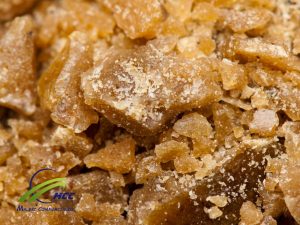
Quality control of Asafoetida (Hing) gum and medicinal plants
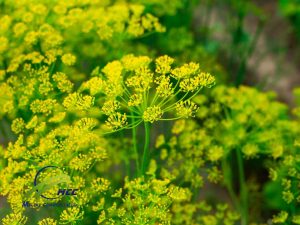
Quality control of Asafoetida (Hing) gum and medicinal plants
Quality control of medicinal plants
Definition of quality control:
Quality control encompasses a range of activities and operational techniques designed to attain predetermined quality standards. It addresses performance issues that may lead to dissatisfaction at every stage of the quality cycle, ultimately aiming for economic efficiency.
Medicinal plants are obtained in three ways:
- Cultivation in fields
- Tissue culture
- Collection from natural habitats
To evaluate the quality of diverse medicinal plant species, taking into account the method of their collection (such as cultivation in fields, tissue culture, and wild species collection from natural habitats), the collected species can be examined through the following methods.
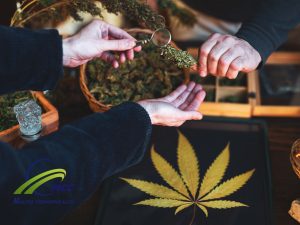
Quality control of Asafoetida (Hing) gum and medicinal plants
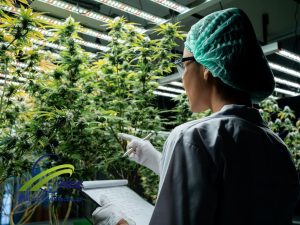
Quality control of Asafoetida (Hing) gum and medicinal plants
Methods for evaluating the quality of medicinal plants
- Sensory evaluation
In this approach, the assessment of quality relies on the application of the five senses, as human sensory perception can to some extent provide a qualitative evaluation
This evaluation adopts a comparative perspective and uses the human senses to recognize the strengths and weaknesses of sensory phenomena without specifying a particular quality.
- Microscopic examinations
The quality of medicinal plants can be checked by microscopic examination based on botanical characteristics and physical properties. This helps to detect fraud or the addition of substances or other plants to a particular plant species.
Quantitative studies such as the number of leaves, leaf index, fiber content, etc. make it possible to distinguish plant species by microscopic examination.
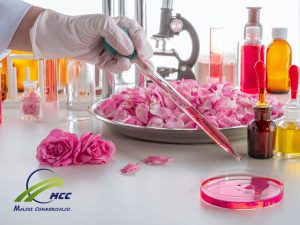
Quality control of Asafoetida (Hing) gum and medicinal plants
- Ash content
When medicinal plants are burned, a non-organic ash residue remains, and a higher residual ash content indicates better plant quality. To determine the total ash, 2.5 g of the selected plant part is placed in a crucible and subjected to combustion. The crucible is then placed in an electronic furnace at a temperature of 650°C for three hours to allow complete combustion and turn the plant material into ash.
The crucible is then placed in a desiccator and weighed with an electronic scale after cooling.
The recorded weight includes not only the ash but also all accompanying elements such as sand, soil, and plant residues.
Each plant species has specified and standardized ash content:
The ash content of peppermint should be between 1.6% and 1.9%.
The permissible ash content in the aerial parts of garden thyme should be between 11.7% and 13.2%.
The formula for calculating ash weight:
Ash weight = Sand weight – (Sand weight + Ash weight)
Then, based on the 2.5 g weight of the plant, the percentage of ash weight is calculated.
- Sand content:
The quantity of debris, sand, and soil adhering to the surface of the medicinal plant part has a significant influence on its medicinal quality and should always be within the specified standard limits.
The permissible sand content for each plant part is specified in reputable pharmacies.
To quantify the sand content on each plant surface, the desired plant is burned, resulting in the production of white ash, which is then weighed.
After weighing the contents, the plant is placed in a small 50 ml flask, and 10 to 15 ml of 10% hydrochloric acid is added to dissolve the ash well in the acid. Subsequently, the ash is subjected to boiling water for 5 minutes and then filtered using ashless filter paper. After the filtration process, the filter paper is transferred into a crucible of a certain weight and placed in an electric furnace set at 650 °C for three hours. After the crucible has been removed from the oven and placed in a desiccator to cool, it is weighed again. The weight deviation reflects the weight of the sand contained in the sample.
- Essential oil content in plants
The essential oil content in the plant indicates the quality of the essence.
To obtain more and higher-quality essence, distillation should take place immediately after harvesting.
Distillation allows the separation of effective substances from the plant without alteration.
The fragrance of essential oils is often attributed to one or more key compounds. In the case of rose essence, the unmistakable aroma is obtained from a mixture of the following substances
- Citronellol
- Geraniol
- Aliphatic compounds
During the distillation process, some essences may oxidize or lose certain compounds due to heat. The key physical factors used to determine the quality of essential oils include:
- Solubility index in alcohol
- Refractive index
- Optical properties
- Specific gravity
The most important chemically determinable properties for essential oils include:
- Alcohol content
- Ester content
- Aldehyde content
- Ketone content
- Acidity determination
Therefore, the higher the quality of the plant, the more essential oils and effective substances it contains.
- Residue of Pesticides
The cultivation of medicinal plants may be influenced by residues of herbicides, fungicides, and pesticides commonly used in their production.
These pesticides must not affect the composition or quality of the medicinal product.
The residue levels must comply with the permitted limits to ensure the safety and efficacy of the finished medicinal or herbal product.
The maximum allowable pesticide residue in the product after harvest for general use should be less than 1 mg kg-1.
- Microbial and fungal contamination
During the harvesting process, medicinal plants are susceptible to contamination by fungi and bacteria.
Microbes in medicinal plants or their derivatives can be classified as either pathogenic (disease-causing agents) or non-pathogenic.
It must be ensured that the plants are free of pathogenic bacteria to use medicinal plants. In addition, the number of non-pathogenic bacteria should be minimized. The presence of aflatoxins in plant parts, even in very small quantities, is dangerous to human health and methods should be used to prevent or detect contamination with this substance.
Evaluating the levels of Escherichia coli, and Pseudomonas can serve as valuable indicators for monitoring and controlling production and processing operations.
- Radioactive contamination
Radioactive rays are used to eliminate contamination and sterilize various plant materials, including harvested plants, packaging materials, by-products, and final products. To ensure the safety and compliance of treated materials, contamination levels must remain within the permissible limits set by international standards.
The lower the level of radioactive contamination and compliance with global standards, the higher the quality of the plant.
- Heavy metal contamination
Environmental pollution or pesticide residues may result in the contamination of plants with heavy metals such as arsenic, cadmium, and lead. The levels of such contamination must not surpass the permissible limits established by international standards to guarantee the safety and quality of the plants.
- Chromatography methods
Chromatography refers to methods that physically separate two or more compounds in a mixture based on their different distributions between two phases. One of the most popular separations and quantitative analysis techniques is High-Performance Liquid Chromatography (HPLC).
In HPLC, a solid porous particle stationary phase with a diameter of less than 150 µm is packed into a long and dark tube called a column.
A small volume of the sample is injected into the column, and the mobile phase, constituting the moving component, facilitates the passage of the sample through the column.
When we measure the concentration of each component after its passage through the column and graphically represent the changes against the mobile phase exiting the column, we obtain a chromatogram.
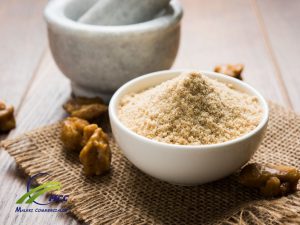
Quality control of Asafoetida (Hing) gum and medicinal plants
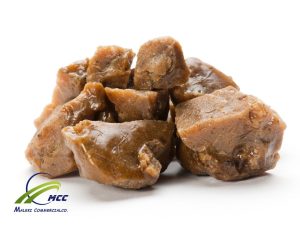
Quality control of Asafoetida (Hing) gum and medicinal plants
Each chromatogram is characterized by four factors:
- Each compound leaves the column as symmetrical spectra after separation.
- The time it takes for a compound to exit the column is used as a characteristic for identifying the compound. This time, known as the retention time, is measured from the moment the sample is injected until the maximum spectrum exits the column.
3- The difference in the inhibition time of the spectra is close to each other (adjacent). The greater this difference, the easier it is to separate these two compounds.
- The width of the spectrum is an important characteristic of each chromatogram.
To determine each spectrum width, two tangent lines are drawn on the spectral wings, intersecting the baseline response of the detector corresponding to zero sample concentration.
Today, this method is widely used for identifying a wide range of substances.
Quality assessment methods for Asafoetida (Hing)
In today’s market, fraudulent practices related to medicinal plants are widespread, making it difficult to source original and unadulterated products. Expertise and experience are crucial when searching for authentic Asafoetida (Hing).
To identify the original Asafoetida (Hing), it must be analyzed.
If you are using Asafoetida (Hing) essential oil, analyzing the composition of the active ingredients determines its quality.
The Asafoetida (Hing) offered by our company is organic, and free from fertilizers and pesticides. You can ensure its quality through analysis and testing, providing peace of mind for your purchase.
In summary, various introduced methods can be used to assess the quality of each plant.
Bulk purchase of high-quality organic Asafoetida (Hing)
If you want to purchase authentic, high-quality asafoetida (hing) without impurities, you can offer your customers the best types of bitter and sweet asafoetida with 100% certainty by purchasing from Maleki Commercial in Iran.
Bulk Purchase of Asafoetida (Hing) for Export
For traders, exporters, and processors involved in the Galbanum gum industry, we offer a reliable and 100% guaranteed option for purchasing high-quality export-grade Asafoetida (Hing). You can confidently purchase Asafoetida (Hing) gum from us, with the assurance of quality and reliability. Our commitment extends to prompt delivery anywhere in the world.
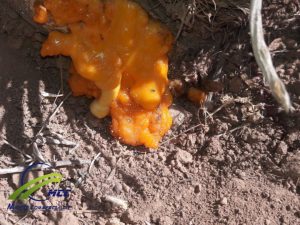
Quality control of Asafoetida (Hing) gum and medicinal plants
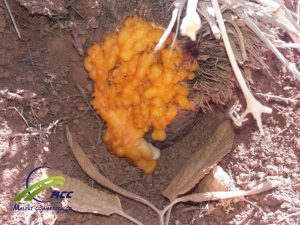
Quality control of Asafoetida (Hing) gum and medicinal plants
Bulk supplier of pure Asafoetida (Hing)
Maleki Commercial is one of the bulk suppliers of pure Asafoetida (Hing), exporting both bitter and sweet varieties to India. Traders, bankers, and wholesale sellers in India purchase their required Asafoetida (Hing) from this company.
Wholesale prices for organic and pure Asafoetida (Hing)
The pricing of Hing at Maleki Commercial is competitive, considering the high quality and organic nature of the product. Prominent Indian merchants choose to make bulk purchases from this company due to the satisfaction of buyers with their organic and wild products.
Bulk export of organic Asafoetida (Hing)
Maleki Commercial can supply quality-exported Asafoetida (Hing) to India, Europe, America, China, Turkey, and all countries demanding this export product.
Wholesale of organic Asafoetida (Hing)
For bulk purchase of bitter Asafoetida (Hing) gum, sweet Asafoetida (Hing) gum, and Asafoetida (Hing) powder, traders and merchants can purchase various types of Asafoetida (Hing) at Maleki Commercial at wholesale prices.
Bulk Purchase of pure Hing
For the purchase of pure Hing without any additives at competitive prices, you can contact us on WhatsApp and Skype.



